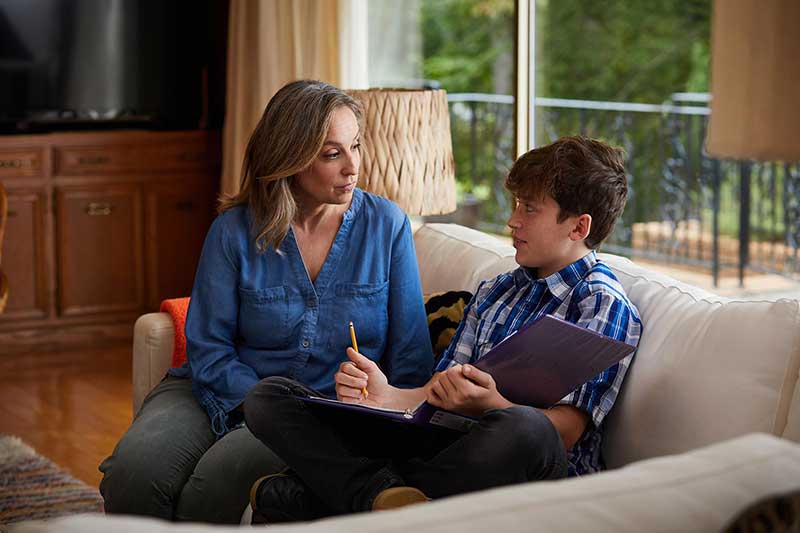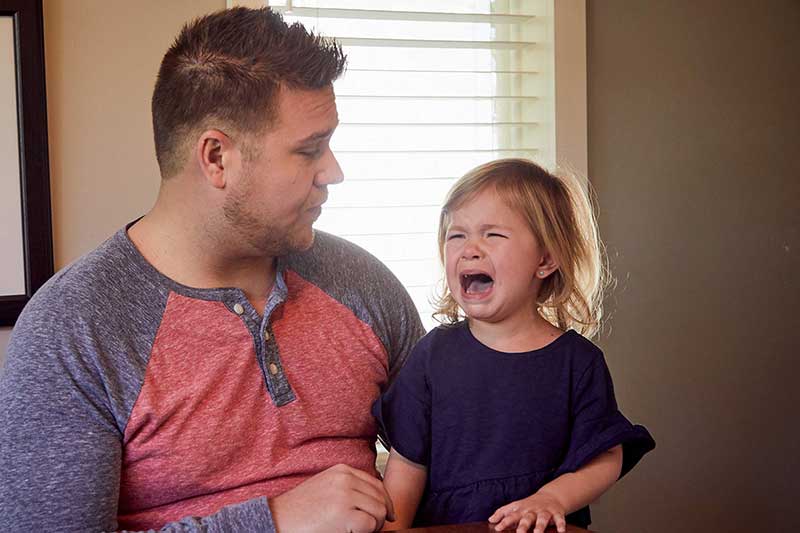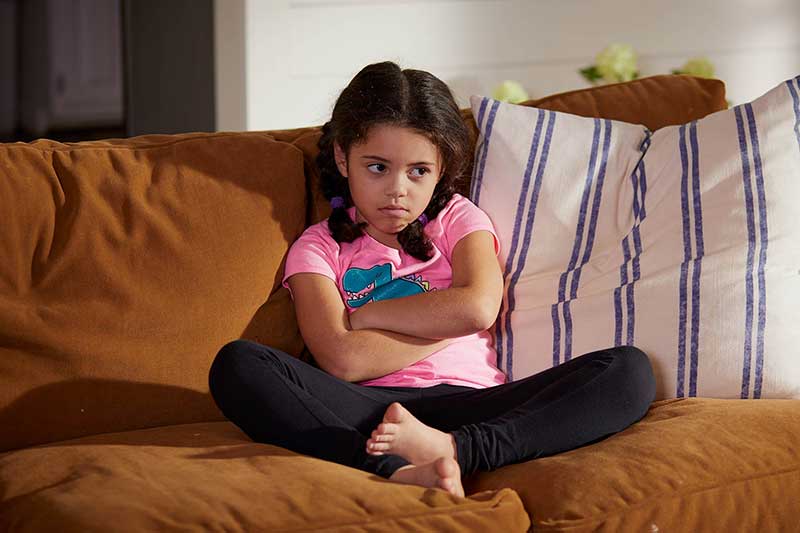Tips for Taming Toddler Tantrums
As frustrating as tantrums can be, they are common at this age because your toddler is still learning how to express themself and cope with their feelings. There are a number of different theories on how best to respond to tantrums or meltdowns. One thing our experts know is that using treats, bribes or giving in are not effective strategies for responding to tantrums.
Learn simple techniques to respond to tantrums in helpful and effective ways.
In this article:
Getting into the right mindset during a tantrum
It’s natural to feel overwhelmed or discouraged when your toddler is experiencing strong feelings. In the heat of the moment, it’s helpful to remember a few important things:
- Tantrums are a normal part of development. It is not unusual to feel like a tantrum is a personal attack on your parenting skills or that there is something wrong with your child. However, it’s helpful to keep in mind that all toddlers have big feelings and that they may find it difficult at times to manage those feelings.
- Tantrums are a form of communication. When children don’t know how to express or manage their feelings, they show us through behavior. Learning how to effectively communicate, express themselves and manage their feelings is something children need to learn and practice with our help.
- Curiosity is a good thing. Your child’s big feelings are real and there is a reason for them (the reason is not always as it seems on the surface or at first glance). Try to get curious about what may be triggering the tantrum or meltdown. Is your child:
- Avoiding something they don’t want to do?
- Trying to get something they want?
- Overstimulated and in need of a break?
- Trying to communicate an unmet need (e.g., hunger, rest, attention, etc.)?
- Consistency is essential. Tantrums can be exhausting for both you and your child, and it may be tempting to give into your child’s demands. Unfortunately, giving in isn’t going to help you or your child long-term. Children need our help to understand limits. If the expectations and how you respond keeps changing, and your child doesn’t know what to expect, they may continue to test the limits.
What to avoid during a tantrum
Some of the most natural ways to respond to a toddler’s tantrum may end up doing more harm than good.
- Bribing. While it may be tempting to offer your child a bribe to get them to calm down, this can backfire quickly because it teaches your child they can get a reward for misbehaving. While not all bribes are food-related, using treats or other food to help calm your child down can start to build a foundation for emotional eating.
- Spanking, yelling or hitting. Research shows that these methods of discipline are not effective in the long-term and can lead to more aggressive behaviors. These responses also do not teach your child how they can manage their emotions in healthy ways.
- Trying to reason. When your child is melting down, they are not able to think reasonably. Trying to explain why something isn’t a big deal to your child isn’t going to get through to them and may only make the situation worse.
- Giving in. As mentioned earlier, tantrums can be frustrating and it’s natural to want to give into your child’s demands. Keep in mind that giving in only teaches your child they can get their way by acting out. Giving in reinforces the behavior, making your child more likely to do it again. Instead of giving in, try to be calm, patient and stand your ground.
Helpful ways to respond to a tantrum
- Pause, breathe and think before you react. Children look to adults to see how they should respond. If your child sees you getting upset or losing your cool, they will likely do the same. Unless safety is an issue, it’s better to take a moment to reset and collect yourself before reacting. Resetting allows you to respond with reason rather than emotion, and it also shows your child how to manage their own emotions in healthy ways.
- Validate your child’s feelings. You may be tempted to react in a way that dismisses your child’s feelings (e.g., saying, “you’ll be fine,” “there’s nothing to be upset about,” “it’s not a big deal,” etc.). Even if you think your child is acting silly or that whatever they’re upset about isn’t a big deal, their feelings are real to them. Letting your child know you understand what they are feeling (and that it’s normal to feel that way) can help them feel seen, accepted and cared about. By saying “I understand you’re really frustrated right now; it’s normal to feel that way,” you are letting your child know their feelings are real and that it’s OK to feel them. This also shows your child that they can trust you with their feelings, making them more likely to share with you in the future.
- Be direct and clear about expectations. Let your child know their feelings are both OK and normal but that there are limits for how to behave. Instead of saying, “no,” “don’t” or “stop,” be clear, specific and consistent with your expectations and limits. For example, let your child know, “I understand you are feeling frustrated, and it’s OK to feel that way, but it is never OK to hit your brother.”
- Offer your child choices. Offer your child two acceptable options for how they can manage their emotions in safe and healthy ways. For example, “You can hug your teddy bear or color. Which one would you like to try to help you feel better?”
- Be patient and offer praise. Once the tantrum has ended, reinforce your child’s positive behavior by praising them for calming down. For example, “I really like how you colored in your notebook to help yourself feel better.” When children receive attention for positive behavior, they are more likely to do it again. A good rule of thumb is to try and give more attention for positive behaviors than for undesirable behaviors.
Tips to help prevent tantrums
Although you cannot prevent every tantrum from occurring, there are some ways you can set you and your toddler up to be in a position where tantrums are less likely.
- Maintain simple routines. Following simple routines, such as going to bed and waking up at the same time each day, helps children know what to expect and feel safe. Start with a routine that makes the most sense for your child. For example, if you know your child tends to have meltdowns when they don’t get enough rest, avoid scheduling anything during their normal nap time or too late in the evening. When life gets in the way or things don’t go according to plan (it happens), take a deep breath and get back on track when you can.
- Offer a sense of control. Sometimes children have meltdowns or tantrums when they feel helpless or as if they don’t have any control. Provide regular opportunities for your child to make their own small decisions. For example, you can let them decide what to wear, chose between two snack options or pick which game you play together. Giving toddlers chances to make decisions will help them feel more independent and a little more in control of their day-to-day lives.
- Teach feeling words. When children aren’t able to identify and express how they feel, they show us with their behavior. By starting to teach your child different feeling words at a young age, you are giving them tools to express themselves more effectively as they get older. As children learn how to communicate, they are less likely to have tantrums and meltdowns.
- Practice healthy coping skills. In addition to learning how to identify and express their feelings, children also need help learning how to manage their emotions in healthy ways. Whether it’s listening to music, taking deep breaths, coloring, going for a walk or playing a game, introduce and practice different coping skills when everyone is calm (it’s difficult to learn something new when we’re upset or too distracted). Many of these strategies can be used anywhere, anytime, and your toddler can continue to use these skills as they grow.
Improving the way you react to your child’s tantrums may take some practice, and you’re not going to get it right every time. Be kind to yourself, and don’t be afraid to admit when you’ve made a mistake.
If you react in a way that you’re not proud of, let your child know that you are sorry and will try to do better next time. It’s beneficial for children to recognize that adults make mistakes too and to learn from how you recover after a mishap.



